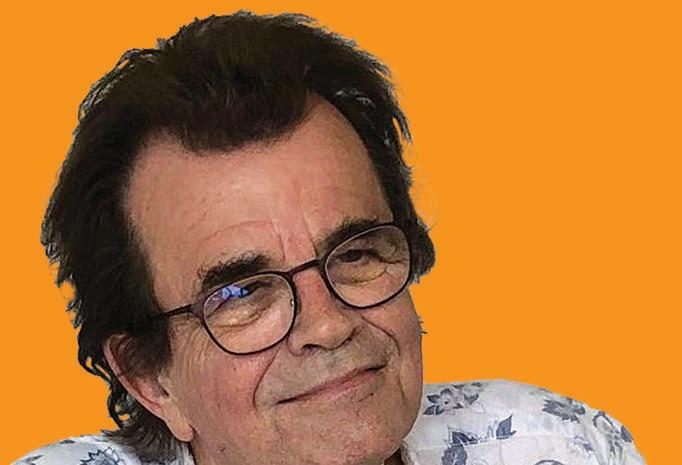
10 minute read
Paul Hopkins
The Fact OfThe Matter

Advertisement

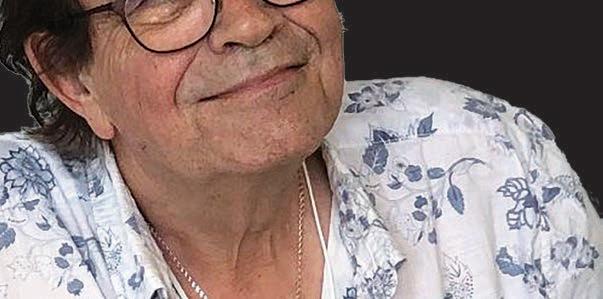
PAUL HOPKINS ‘Look after your children, they are most precious’
My father’s sister Maeve was a mere slip of a young woman when she took the boat to an England where ‘no Irish need apply’ and eventually found a job in the British civil service and a flat in Chiswick. She came home every Christmas to my grandmother’s house and my family would visit on Stephen’s Day.
I liked her. Maeve spoke in a clipped accent and always gave us expensive presents. She never married, had no friends in London that she spoke of, and across the water was known as Mary, the name on her birth cert and also my grandmother’s name.
Every Christmas driving home my father would say to my mother: “Poor Maeve, my heart goes out to her, going to London on her own all those years ago.”
When she retired Maeve came home for good, and bought a pokey council house in a not very desireable area. Now 65, she seemed hardened and embittered by life. She only spoke when necessary.
By then I was married with young children and every other Christmas I would invite Maeve to come stay with us. Her tradition of giving lavish gifts continued, though to look at her you would think she hadn’t a penny to her name. She took no pride in herself, was dowdy and unfashionable.
She seldom interacted with my children, but I do remember her more than once saying to me: “Look after your children, Paul. They are the most precious thing you can have.” Her tone struck me as odd.
My grandmother was many years dead and when her youngest daughter Toni died at only 54, eventually her home was sold but one day before that there was a knock on the door.
A balding, middle-aged man with an English accent stood there and said: “Forgive my intrusion, but does Mary Hopkins live here?”“I’m sorry,” said a family member, “but Mary Hopkins died some years ago.”
The day we buried Maeve, in her 80s, my brother said to me: “I often wonder if that man that day was actually looking for Maeve. She was after all known over there as Mary.”
“That’s interesting,” I mused, “who do you think he was?”
My brother said matterof-factly: “Well our mother always maintained that Maeve had gone to London to have a baby and give it up for adoption. A family secret, you might say. Maybe that was her son that day looking for her but of course he asked for Mary and we confused it with our grandmother.”
I can see my grandmother banishing her pregnant, unmarried daughter from the house. The hussey. It was a different back then. Families failed their daughters. Society failed them.
When I was 16, there was the Gang of Five, four boys and ‘Burns’ who looked like a young Audrey Hepburn. One day Burns said she wanted us to meet a girl she had just met. (I cannot recall the circumstance of their meeting)
Anna was tall and svelte, and as pretty as a picture; shy and unassuming. She was 16 and had been ‘raised’ in the Sacred Heart Home. We never asked her the ‘why or wherefore’ of her circumstance. Such inquiring was not in our thought process back then.
We five and her used to meet every Sunday afternoon, her only free time. We would walk the expanding suburban landscape of north Dublin, laugh and flirt and talk of Steinbeck and Yeats and Dylan and Phil Lynott.
Anna always had to be back at the orphanage by six to “help the nuns with the babies and sort out the washing of the nappies”. I remember when this shy but lovely girl told us this that I noticed how raw her hands were.
One Sunday she failed to show. Perhaps, she’s busy we thought. We rendezvoused for two more Sundays and then, typical teenagers, gave up on her.
To this day, I wonder often what became of her, what kind of life did Anna have. Did she find love? Happiness?
Extracted from the just published book A airs of the Heart (And Other Writings) by Paul Hopkins (MonumentMedia, €14.99) Described as a collection of stories to warm the emotions and light the soul... the very essence of what it means to be human Available at select bookstores and at www. monument mediapress.com


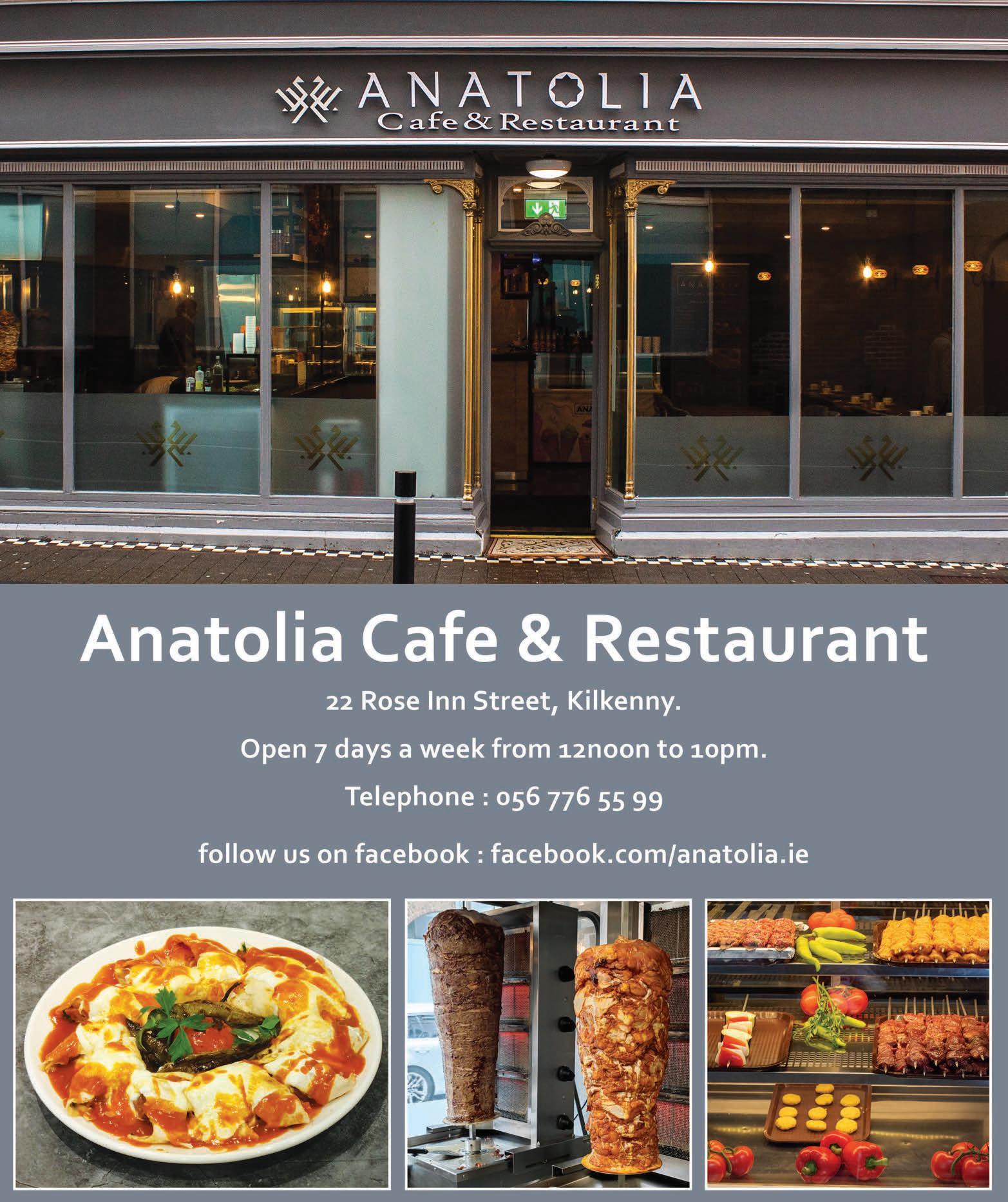
Covid closed 4,510 companies
A new report suggests that businesses in Ireland were less likely to fold than in all other EU countries during the first year of the Covid19 pandemic.
However, the new figures published by the European Commission also show Irish entrepreneurs were more reluctant than most European peers to set up a new business during 2020.
The preliminary figures show the rate of enterprises that floundered was just 1.6% of all businesses in 2020 — the latest year for which comparative data is available.
It relates to 4,510 enterprises in the State which were recorded as ceasing trading that year. The rate of death enterprises represents the proportion of total active enterprises which cease to operate in a calendar year.
The figures exclude companies that are involved in mergers, takeovers, breakups or restructuring. Ireland's rate of business closures was exactly half that of the country with the second lowest rate of enterprise deaths — Belgium at 3.2%.
More than one in every five enterprises in Lithuania collapsed during 2020, and more than one in 10 went out of business in Bulgaria, Portugal, Denmark and Latvia.
The low rate of business failure in the immediate wake of Covid was in large measure a result of wage supports, tax warehousing and other governmentfunded schemes as well as payment breaks from banks and other lenders. Gradual withdrawal of that aid is predicted to trigger a wave of insolvencies, although it has yet to happen.
A spokesperson for the European Commission said the pandemic disrupted the business environment "tremendously” including the temporary shutdown of some business sectors which made many reluctant to start new businesses as the existing ones struggled to keep afloat.
However, the birthrate for new enterprises here indicates a comparatively low level of new start-ups compared to other EU countries and a reluctance to set up new businesses during the pandemic.
Think-in to look at how Kilkenny is placed to drive design excellence
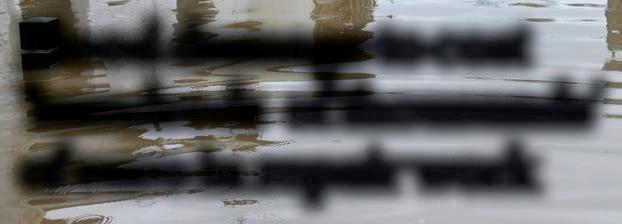
Kilkenny County Council is staging a unique conference event showcasing the past, present, future on how Kilkenny is positioned to drive design excellence. is prestigious event will celebrate Kilkenny's design legacy on Friday, November 18 at the Parade Tower, Kilkenny Castle. is event is one of many events taking place nationwide during Design Week 2022.
Building on the legacy of design in Kilkenny, this conference will celebrate the strong history of design in Kilkenny and cast an eye on how this rich legacy could contribute to the future of design in Kilkenny. e event will also see the launch a new publication, Designing for Ireland, commissioned by KIDCo and authored by Mark Duncan. is book examines the political context of the Kilkenny Design Workshops and design in Ireland.
Event MC, Richard Curran will chair two panels on the morning. e rst panel commemorating the history of design in Kilkenny and in Ireland, will include Mark Duncan; Mary Mullin and Dr Mary Ann Bolger. e second panel will examine, the future of design and will include industry experts Aoife Murphy of Tirlan; Carol Gibbons, Enterprise Ireland; Tom Watts, DCCI; Dr. Fiona Chambers, and Elisa Luoto representing Young Finnish Design.
Aileen McGrath, Acting Head of Enterprise for Local Enterprise O ce Kilkenny, said: " e future of design is very important to Kilkenny. We want to encourage the development and viability of all business through the promotion of design, innovation, and design led thinking. " is Design Kilkenny event will re ect the origins of design in Kilkenny and will discuss what lies ahead in this dynamic eld."
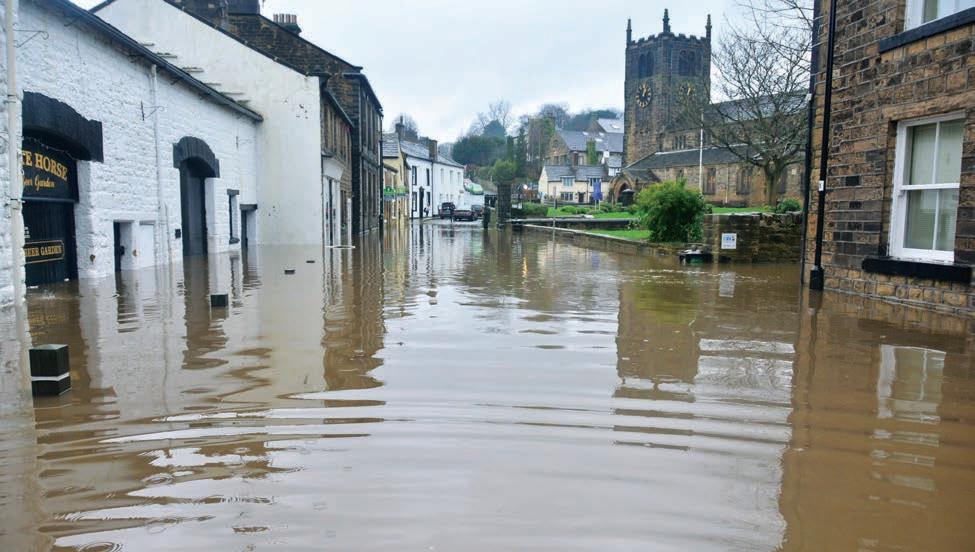
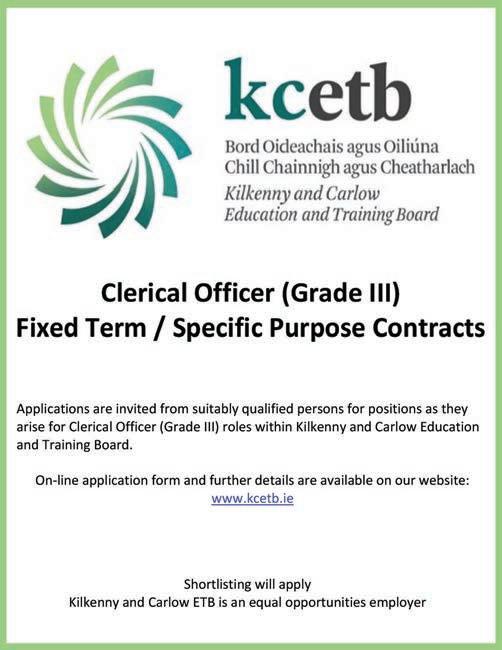
Flood damage to cost 'hundreds of thousands' of euro in repair work
e recent ash ooding in Wexford and the extensive damage caused could cost "hundreds of thousands” of euro to repair.
Multiple roads were closed and homes and businesses were ooded after torrential rainfall in the Gorey area.
Director of Services at Wexford County Council, Eamonn Hore, described the ooding as the latest in a series of "unusually serious weather events” in Wexford this year. "On [thew recent] ursday night we had 16 roads ooded. Five were completely blocked, including the motorway between junctions 23 and 22, and three regional roads were impassable,” said Mr Hore.
All roads were reopened by the next afternoon.
Mr Hore said ood waters entered four business premises and two houses, and he expected the overall cost of the damage to "run into the tens of thousands, maybe the hundreds of thousands”. "So, it has been a really serious event, and to have a motorway closed for up to four hours is almost unbelievable,” he added. " e intensity of the rain rose from about three o'clock to four o'clock and it was at about 20 millimetres an hour for a number of hours. Given that anything above eight millimetres an hour is considered very heavy rain, this was an unusual event.”
One local farmer said it looked like a "tornado” had ripped through the county.
Speaking to South East Radio, Willie John Kehoe said there was signi cant destruction in the Foulksmills and Clongeen areas. "It looks like a tornado came through,” said Mr Kehoe. "It has levelled the whole farmyard, a big old house here, and I believe down the road there's a good few houses damaged. It's in a line of about 100 metres wide and it's just pure destruction the whole way along. "Everything in the old part of the yard was levelled, the garden walls were levelled, big tress that have stood for hundreds of years, they're just completely not there.”
We're getting plugged in for our EVs
e EasyGo, the largest private car charging network in Ireland, has announced a multi-million Euro investment in new fast DC EV chargers in towns and villages around Ireland, including Kilkenny. e investment is part of a partnership with eir, Ireland’s leading telecommunications company, where telephone kiosks are being removed and replaced with state-of-the-art Tritium electric vehicle chargers.
As part of this investment programme, EasyGo has committed to deploying 200 fast DC chargers around Ireland. EasyGo has contracts to add Tritium chargers at 70 locations in counties Kilkenny, Tipperary, Waterford, O aly, Mayo, Cavan, and Monaghan, which will be rolled out over the next six months.
EasyGo is actively engaged with other local authorities to identify 130 additional locations across Ireland for new fast DC Tritium chargers, and this programme will be delivered at zero cost to county councils. Commenting on this project, Chris Kelly, founder and technical director of EasyGo, said:“ is rollout is consistent with the national strategy outlined by Department of Transport and ZEVI. ese chargers will make the transition to EVs in rural Ireland much easier and will be located in convenient town centre locations across the country.” To support with the EV technology requirements for the rollout, EasyGo has partnered with Tritium, a global leader in DC fast chargers for electric vehicles and producer of some of the most advanced DC fast chargers in the world. e news comes as a new report cites the lack of adequate electric vehicle (EV) charge point infrastructure in rural Ireland raises serious doubts about the Government’s ability to deliver on the Climate Action Plan’s commitment to have almost one million EVs on Irish roads by 2030. e report is based on research published by the Northern and Western Regional Assembly (NWRA), one of Ireland's three regional assemblies.











